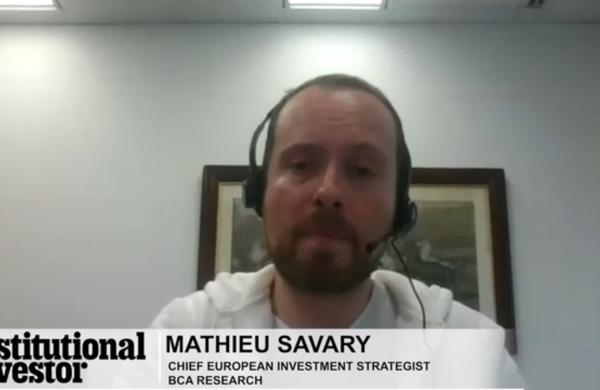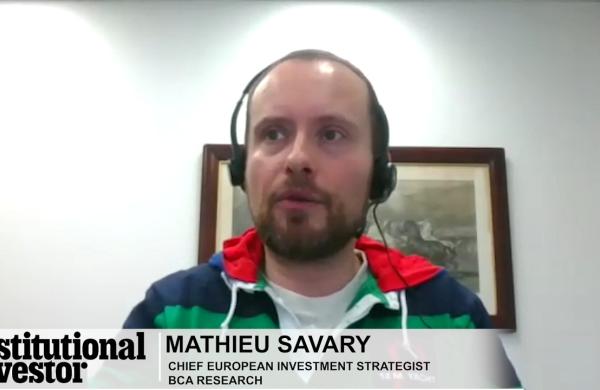More and more companies are reaching -- ever so cautiously -- for a little extra yield.
By Jill Andresky Fraser
August 2002
Institutional Investor Magazine
In an environment of low interest rates and heightened sensitivity to risk, corporate treasurers are looking to squeeze stronger -- but still safe -- returns from their cash assets. Wall Street's response: a wide array of souped-up institutional money market funds. These portfolios offer modestly higher yields through slightly extended maturities and a judicious smattering of asset- and mortgage-backed securities. As companies keep more cash on their balance sheets, the demand is expected to grow.
Extra-yielding money funds have been around for decades in one incarnation or another, of course. Today they sport new labels, such as Citigroup's "enhanced li-quidity composite assets." According to Westborough, Massachusettsbased IMoneyNet, publisher of "Money Fund Report," the "cash plus" market -- the space between traditional money funds and ultrashort bond funds -- holds between $250 billion and $300 billion in assets. These funds typically yield about 2.3 percent, versus 1.3 percent for basic money market funds.
The expansion of Citigroup's business is indicative of the sector's growth pace. As of June 30 Citi was managing $5.26 billion in enhanced liquidity assets, compared with $3.4 billion at the end of 1998.
"There are two big drivers behind this trend," explains J. Michael Miller, a senior vice president at Weiss, Peck, & Greer, an investment and venture capital firm. "In an uncertain environment a company's stock price depends upon factors like stability and security, which gives treasurers a strong incentive to increase their cash positions."
Adds Miller, who directs sales and marketing of WP&G's cash and short-duration fixed-income products: "In a situation where a company is choosing a strategic vendor, it's critical for them to know that the vendor will be around in one, three, five years. So it's competitively advantageous for a company, when marketing itself as a potential vendor, to be able to say, I've got x hundreds of millions of dollars on my balance sheet. Does the competition have that?"
All but the most ultraconservative of corporate treasurers have started to move some cash out of their overnight sweep accounts and into higher-yielding portfolios. But they remain focused on safety. "The thing to remember about this market is that return on operating cash is not as important as the cash returning," says Adam Bear, a Charlotte, North Carolinabased senior vice president of client investment strategies at Bank of America Corp. "That said, people are getting pretty pessimistic about where rates are right now. So treasurers who in the past wouldn't have looked beyond sweep accounts are now asking us, What's out there that can help us improve the yield without significantly raising our risks?"
Money managers tailor portfolios to the specific liquidity needs and risk tolerances of their clients. "There's a very big range in the kind of client situations that we're dealing with," explains Kevin Kennedy, a New Yorkbased managing director of Citigroup Asset Management, who notes that the bank has been providing these kinds of services to at least a handful of customers since the early 1990s.
"One company might have raised $500 million to pay down debt over a graduated schedule or to make a longer-term acquisition next year," says Kennedy. "With other clients, they'll tell us they don't have a clue about their liquidity needs beyond a month or two."
At Citigroup investors with more than $100 million in cash pay lower fees than companies with smaller accounts; the average portfolio in Citigroup's enhanced liquidity group has $250 million in assets.
"We'd like to charge more," Kennedy says. "But the competition is so fierce that if we didn't price aggressively, we wouldn't get our feet in the door."
Will the market for enhanced money funds continue to grow? Bank of America's Bear expects treasurers to move money back into sweep accounts "as soon as rates start rising. That's mainly because they're the easiest, most completely liquid and safest of investments."
WP&G's Miller is more optimistic about the prospects for further growth in higher-yielding money funds. "The corporate treasurer who profiles the company's precise liquidity needs and truly understands the risk factors involved in this type of cash management won't go back."
'Let me be perfectly clear'
Not many CEOs are happy with their company's stock price these days, and money management chieftains are no exception. A recently released survey by PricewaterhouseCoopers found that more than half of the executives interviewed believe that institutional investors and analysts do not fully understand the important "drivers" of their business. As a result, the asset management CEOs believe, their stocks may be undervalued by their own industry peers.
The survey, which included input from 16 independent investment management firms, 28 business units of larger financial services entities, 30 securities analysts and 50 institutional investors, is part of a three-year-old "value reporting" project by PwC, which has already examined similar issues for banks, insurers and telecommunications companies.
"Our goal, within each of these industries, has been to figure out the specific things that drive value -- to get beyond the short-term earnings game that most companies are caught in as the result of our current reporting system -- and to then figure out how executives could do a better job of helping the investing public understand what they're doing to create value," explains Gary Meltzer, a partner in PwC's investment management industry group, who supervised the study.
"Many executives," he continues, "don't ever sit down and try to articulate for themselves what these drivers are and what they wish the outside world understood better about their businesses."
Meltzer and his team drew up a list of 30 measures of business performance and asked each respondent group to rank them in the order of importance to them (vis-à-vis the central issue: the "value" of the investment-management businesses). All four groups agreed that seven measures were "highly important": investment product performance, profit margins, asset growth from investment performance, quality of management, asset growth from product cash flows, asset retention and competitive landscape.
Investment management executives cited five other success drivers as "highly important," none of which made the radar screens of either investors or analysts: compensation levels of professional staff, employee retention, compensation strategy, enterprise risk management and experience and quality of investment research professionals. Meanwhile, although securities analysts shared the executives' sense that two other measures -- product diversification strategy and assets under management -- were of major importance, investors simply overlooked them.
Says Meltzer, "In the environment that we've now moved into, we can all see that what's important for investment management companies, like all companies, is a reporting system that tells investors enough to avoid surprises."
Clearly, there's room for improvement. But does the money management industry require major changes in its financial reporting landscape?
Probably not, suggests Nigel Dally, a Morgan Stanley analyst who tracks life insurers, several of which own investment-management units. "From my perspective," he notes, "life insurance companies do a very good job of breaking down what's happening on a divisional basis. There are really two things to consider here. First, do they give me all the information I want, in terms of financial reports by division? And I'd have to say they do. Then, do they do a good job of conveying both the company's overall strategy and the way that each of their divisions will play a role in that? Again, I'd have to say that I have no complaints."
For companies that feel that their investors don't understand them, the best bet might be to try harder. Darrell Crate, the chief financial officer of Affiliated Managers Group, a publicly traded money manager that owns majority stakes in 18 investment management firms, makes it a priority to provide investors with supplemental disclosure information, especially when it comes to what he considers to be the real core of AMG's business: its ability to generate cash.
"GAAP financials don't go far enough in this regard," he says, adding: "Actual cash is the truest measure of the economic opportunities that our firm possesses. Cash flow statements frequently don't provide this kind of information, because accounting anomalies can confuse things. I'm convinced that this is the most important thing investors need to know about our company, so I make sure that I give them as much information as I can about it." -- J.A.F.





